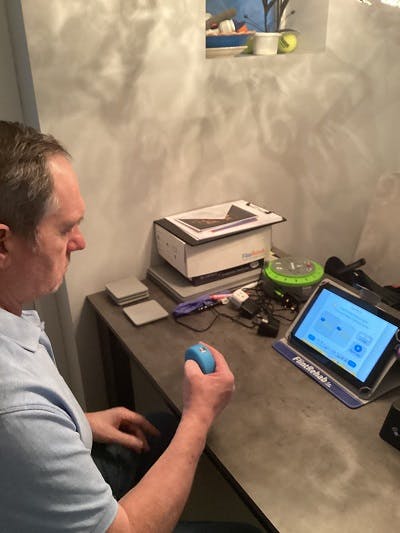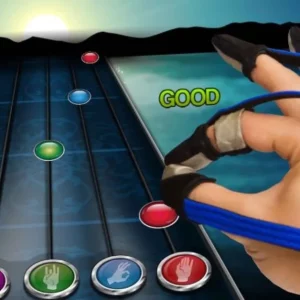Following a stroke, miscommunication between the brain and muscles can cause the muscles to involuntarily contract and become stiff, a condition known as spasticity. One way to treat spasticity and relax the muscles is to use Botox for stroke patients.
Some patients aren’t provided with enough education on exactly how Botox works, so they only see short-term results. This article will discuss the use of Botox for spasticity and help you understand how to turn your temporary gains from Botox into lasting improvement.
Botox for Spasticity After Stroke
Spasticity is a condition where the muscles become stiff due to prolonged contraction or spasm after neurological injuries like stroke. Patients may feel like spasticity is a problem with the muscles themselves, but the problem actually stems from miscommunication between the brain and the muscles.
When a stroke damages the motor cortex, it impairs the brain’s ability to tell the muscles to either contract or relax. This miscommunication can cause multiple muscles to contract involuntarily without being able to relax, causing spasticity.
Over time, spasticity can be painful and can lead to other complications such as contracture. Contracture occurs when a muscle is unable to fully relax and elongate, resulting in the muscle becoming tighter and shorter over time. This can affect range of motion and limit performance of many daily activities.
By injecting Botox directly into the muscles that are affected, spasticity can be significantly reduced. Botox (botulinum toxin A) works as a “nerve block” that blocks the release of chemicals that signal your muscles to tighten. This prevents the muscle from spasming and will allow it to stay more relaxed.
One study found that reduction in spasticity was associated with significant improvement in arm function after stroke. It suggests that a moderate dose of Botox helps reduce spasticity long enough to allow for functional improvements without causing a significant decrease in strength.
However, it’s important to understand that Botox is not a permanent fix. Because it does not address the underlying cause of spasticity (miscommunication between the brain and muscles), Botox only provides temporary results. Once injected, the effects generally last about 3-4 months. Unless you get another injection, spasticity will return.
By taking advantage of the reduced muscle tone while using Botox and focusing on the root cause of spasticity (restoring the brain-muscle connection), individuals can achieve long-term improvement in spasticity and function.
How to Maximize the Benefits of Botox for Stroke Patients
Botox becomes a temporary treatment when it isn’t used in conjunction with physical therapy to restore brain-muscle communication. It’s kind of like using pain killers for a broken ankle without wearing a cast. The painkillers will make the pain go away, but you aren’t doing anything to address the root problem.
That’s why it’s important to treat spasticity on both levels: relieve the symptoms temporarily with Botox and improve the root cause long-term by doing rehab exercises. This allows you to build strength and increase mobility while the Botox is most effective.
Using Botox without participating in physical and/or occupational therapy will lead to only temporary improvement. However, if you use the effects of Botox to create an opportunity to exercise more effectively, then you can see long-term results.
Recovery after stroke is possible through a process known as neuroplasticity. Neuroplasticity is the brain’s ability to reorganize and rewire neural connections and movements through stimulation and repetition. Consistently practicing movements affected by stroke will help promote rewiring of those functions to healthy, undamaged regions of the brain. As a result, those movements will become easier and less affected by spasticity.
Botox relaxes your muscles so that you can move more in the short term, and rehab exercises will reinforce efficient movement patterns and promote neuroadaptive changes in the brain, improving your function in the long term.
Side Effects of Botox for Stroke Patients
While Botox can be a very successful form of spasticity treatment for stroke survivors, there are potential side effects you should be aware of.
Common side effects of Botox include:
- Soreness
- Fatigue
- Nausea
- Muscle weakness
- Headache
- Bruising
- Joint pain
While general soreness and bruising near the injection site are normal, more serious complications like muscle weakness, difficulty breathing, vision problems, and loss of bladder control warrant immediate medical attention. Call your doctor if you experience these complications after your Botox injection.
Alternative Treatments to Botox for Stroke Patients
Although many individuals experience spasticity after stroke, only some may benefit from Botox while others should consider alternative options. Your doctor and rehab team can help you decide on the best treatment plan for your specific needs.
Additional spasticity treatments include electrical stimulation or medication such as Baclofen, which can help treat muscle stiffness and spasticity. Both of these spasticity treatments work best when combined with rehabilitation exercise in order to maximize improvement in overall function.
Baclofen is a muscle relaxant that can be taken orally, or it can be administered via an intrathecal baclofen pump, which is surgically implanted. Although medication can be helpful, it’s important to consult with your doctor before taking any new medications as there may be potential side effects that can interfere with your recovery.
Electrical stimulation works by placing non-invasive electrodes on your skin and sending gentle electrical impulses to your affected muscles. This stimulation helps the muscles contract and promote communication with the brain.
It might seem counterintuitive for someone with spasticity to use a treatment that helps the muscles contract even more. However, stimulation to the muscles helps engage neuroplasticity and, when combined with rehabilitation exercise, can help spastic muscles loosen over the long-term.
Always consult with your doctor or therapist before trying any new treatments for spasticity to ensure it is safe for you. Electrical stimulation may not be an appropriate treatment for you, especially if you have an implanted device such as a pacemaker.
Using at-Home Therapy to Reduce Spasticity Long-Term
Whether you use Botox, medication, or electrical stimulation, it’s essential to keep rehabilitation exercise as a staple of your regimen. Many survivors stay engaged in rehabilitation exercise during their therapy sessions, but they usually attend just 1-2 therapy sessions per week. This is not enough to maximize neuroplasticity and functional improvement, and therefore it’s important to stay engaged in home therapy exercises between therapy sessions.
Many therapists provide survivors with written exercise programs to follow at home between visits, but it can be tough to stay motivated to perform these daily. This is where you can use high-tech home therapy devices like FitMi from Flint Rehab to keep yourself motivated. This interactive device helps you accomplish high repetition of therapeutic exercises by turning it into a fun, interactive game.
If spasticity makes participation in exercise difficult, you can consider using Botox to provide short-term relief and use rehab exercises, such as FitMi, to activate neuroplasticity for long-term mobility.
Here’s a story from a survivor that used a combination of treatments to reduce spasticity after stroke:

“Cliff had his stroke in May 2019 which left him with aphasia and right sided weakness in his right leg and right arm and unable to use his right hand. He also has spasticity in his hand which causes his thumb to go inwards. Although through physio and Botox he has gained a little movement in his hand, we ordered the FitMi.
Cliff started using it right away managing only a short time at first and some of the exercises he couldn’t do. Gradually over the last few weeks he has built up to doing 40 mins a day and yesterday managed to actually do 3 thumb press and releases which he hasn’t previously been able to do. There are still some exercises that Cliff cannot do or can only manage a few but everyday I can see an improvement not only physically but also in his mental well being. He is so determined to beat his high score and it’s really encouraging him to keep trying. He is really enjoying using the FitMi and we really recommend it.”
-Susan T.
Rehab exercises after Botox are key to reduce spasticity and improve overall mobility long-term. Whether you use FitMi or follow a written exercise program, the most important thing to focus on is performing high repetition to keep neuroplasticity activated.
Understanding Botox for Stroke Patients
If you’re experiencing spasticity after a stroke, Botox may be an effective treatment. However, it’s essential that you take advantage of its muscle-relaxing effects by participating in intensive rehabilitative therapies to promote long-term spasticity relief. Without addressing the underlying cause of spasticity, individuals will only experience short-term relief from Botox.
We hope this article helped you better understand what Botox is and how to use it to effectively treat spasticity after stroke.










